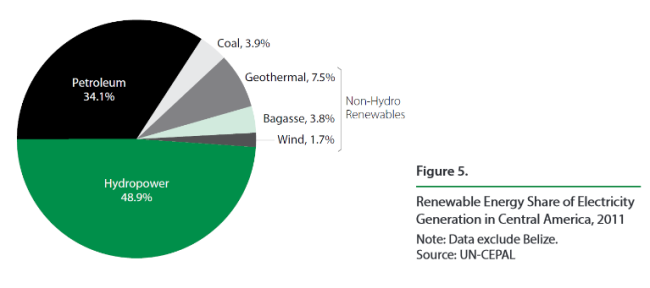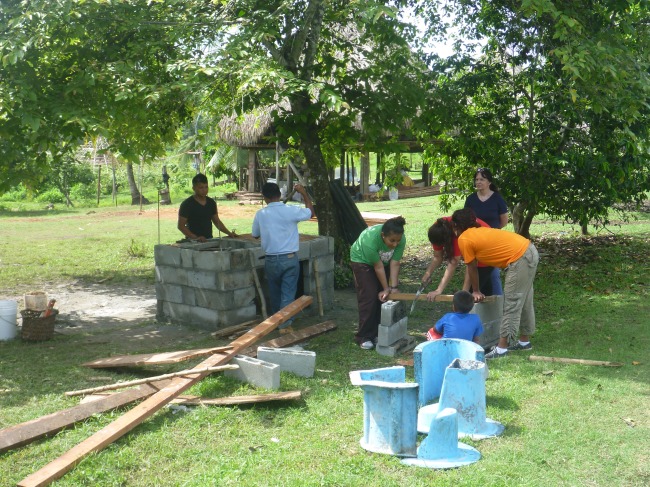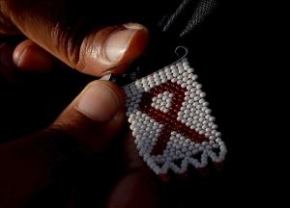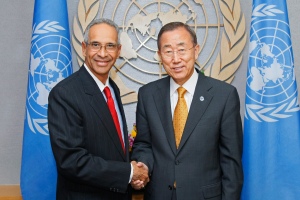Beginning almost 10 years ago, the Central American region has been launching a wide range of small, clean energy projects in an attempt to combat the increasingly destructive effects of climate change. It is also an effort to provide cheaper alternatives to costly oil, and to supply power to communities in remote locales.
According to the Economic Commission for Latin America (a United Nations initiative), the region’s endeavors have been quite successful, with renewable energies contributing approximately 65% of the electric power used for public utilities. Gravity-powered micro hydro-power systems have been wildly successful in El Salvador, where families used to chop down trees for fuel, in turn damaging the ecosystem. So successful in fact, that Salvadoran border communities have started selling power to their neighbors in Honduras.
El Salvadoran director of Basic Sanitation, Health Education and Alternative Energy (known by its Spanish acronym – SABES), Louis Boigues, touts the hydropower plant as his country’s first “bilateral project.” The venture, completed in 2010, cost about $150,000 and was funded by the government in the Spanish region of Aragon. SABES, along with the help of the Energy and Environment Partnership with Central America (EEP) and local citizens, handled the construction of the plant.
Seeing the success of their neighbors, many of the other Latin countries began their own small green projects as well. Belize, Costa Rica, Guatemala, Honduras, Nicaragua and Panama have all taken measures to improve renewable resources. Common methods include using biomass, geothermal, wind, and solar energy to produce clean energy.
—
Just how far can renewable energy go in Central America?
According to a June 2013 study published by the Worldwatch Institute, “Central America has the potential to meet 100 percent of its electricity needs with renewable energy, provided that the proper policies, incentives, and political support are in place.”
While many of the region’s citizens still lack access to electricity, power production of the seven countries combined totaled 44,000 megawatt hours in 2012, an increase of 4.7% from 2011.
The Inter-American Development Bank (inarguably the largest source of state-level financing in Central/Latin America) estimates that the entire gulf region, both the Latin Americas and the Caribbean, holds a “geothermal potential” of around 6,000 MW (megawatts).
Earlier this year, El Salvador announced its plan to invest between $800 million and $1 billion to develop 355 MW of natural gas, the first and only (at least for now), venture of its kind in all of Central America. Although natural gas, a hydrocarbon-based fuel, is not as “clean” as some of the other methods mentioned previously, it is generally accepted as being “cleaner” than other fossil fuel options.
As stated by Alexander Segovia, Salvador’s technology secretary: “This is the biggest private investment in energy in the country’s history, (and) with this project we are securing the availability of energy for the future, with cleaner and cheaper power.”
—
Despite the overwhelming poverty, lack of education, violence, and corruption that has plagued the region throughout its history, Central America is still managing to make leaps and bounds in the renewable energy industry. And considering the plethora of talent and capital that the United States possesses, I would say it’s about time to start following Central America’s example.
Source(s):
http://www.cepal.org/default.asp?idioma=IN
Click to access CA_report_highres_english_2013.pdf
Click to access 2012-GEA_International_Overview.pdf
http://www.greenlocal175.com/urgenews.html
http://www.trust.org/item/20131128170602-5qi3n/
http://en.wikipedia.org/wiki/Inter-American_Development_Bank













